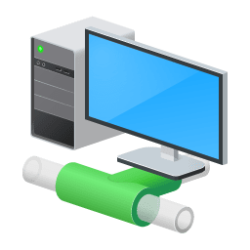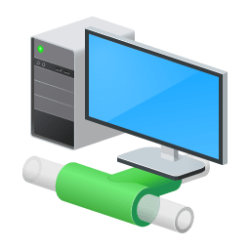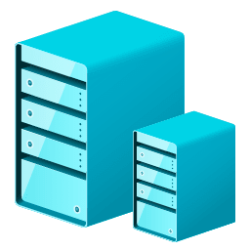This tutorial will show you how to see if a Hyper-V virtual machine is generation 1 or generation 2 in Windows 10 and Windows 11.
Hyper-V enables running virtualized computer systems on top of a physical host. These virtualized systems can be used and managed just as if they were physical computer systems, however they exist in virtualized and isolated environment. Special software called a hypervisor manages access between the virtual systems and the physical hardware resources. Virtualization enables quick deployment of computer systems, a way to quickly restore systems to a previously known good state, and the ability to migrate systems between physical hosts.
When you create a new Hyper-V virtual machine, you can choose to create a generation 1 or generation 2 virtual machine.
Your choice to create a generation 1 or generation 2 virtual machine depends on which guest operating system you want to install and the boot method you want to use to deploy the virtual machine. It is recommend that you create a generation 2 virtual machine to take advantage of features like Secure Boot unless one of the following statements is true:
- You're using an existing, pre-built virtual disk (VHD or VHDX), which isn't compatible with UEFI.
- Generation 2 doesn't support the operating system you want to run on the virtual machine.
- Generation 2 doesn't support the boot method you want to use.
You cannot change a virtual machine's generation after you have created it.
References:

Should I create a generation 1 or 2 virtual machine in Hyper-V?
Gives considerations such as supported boot methods and other feature differences to help you choose which generation meets your needs.
learn.microsoft.com

Hyper-V feature compatibility by generation and guest
Lists the generations and operating systems that are compatible with key Hyper-V features
learn.microsoft.com
You must be signed in as an administrator to determine a Hyper-V virtual machine generation.
Contents
- Option One: Determine Hyper-V Virtual Machine Generation in Hyper-V Manager
- Option Two: Determine Hyper-V Virtual Machine Generation in PowerShell
EXAMPLE: Choose virtual machine generation in "New Virtual Machine Wizard"
1 Open Hyper-V Manager (virtmgmt.msc).
2 Select the virtual machine (ex: "Windows 11 Home") in the middle pane you want to determine its generation. (see screenshot below)
3 You will now see the Generation (1 or 2) of the selected virtual machine in the bottom "Summary" section of the middle pane.
1 Open Windows Terminal (Admin), and select Windows PowerShell.
2 Copy and paste the command below into Windows Terminal (Admin), and press Enter. (see screenshot below)
Get-VM | Select-Object -Property Name, Generation3 You will now see the Generation (1 or 2) of all virtual machines.
That's it,
Shawn Brink
Last edited:












